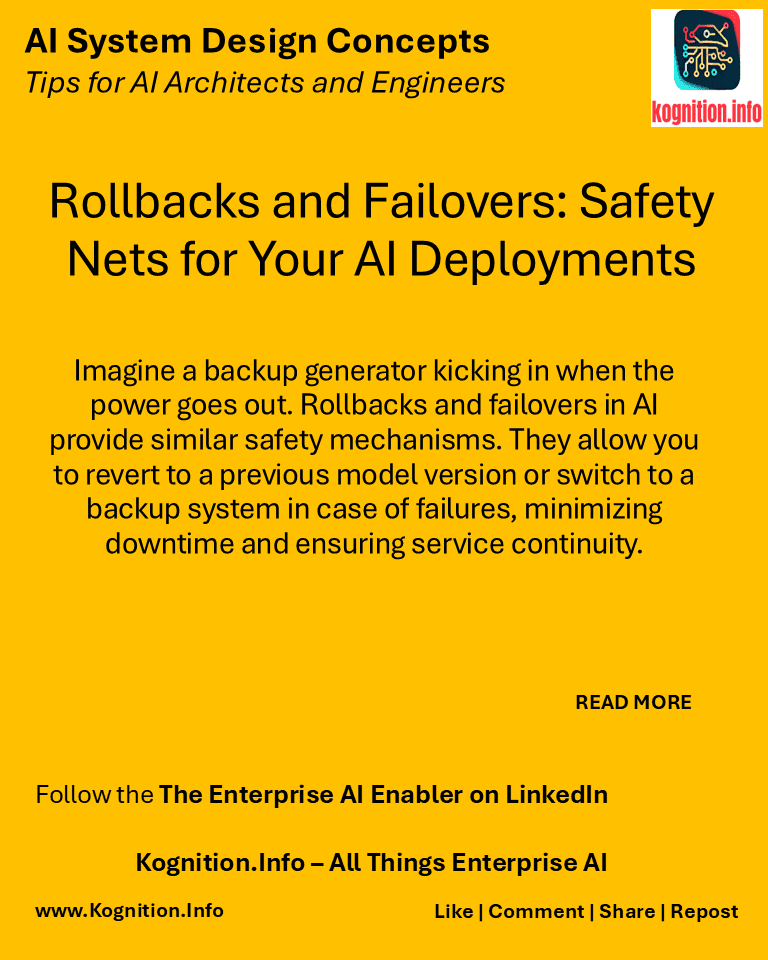
Imagine a backup generator kicking in when the power goes out. Rollbacks and failovers in AI provide similar safety mechanisms. They allow you to revert to a previous model version or switch to a backup system in case of failures, minimizing downtime and ensuring service continuity.
Use cases:
- Handling model errors: Reverting to a previous model version if a new model introduces errors or performs poorly.
- Dealing with infrastructure failures: Switching to a backup system or environment in case of hardware or network failures.
- Ensuring service continuity: Maintaining service availability even during unexpected events.
How?
- Implement model versioning: Maintain a history of model versions for easy rollback.
- Set up monitoring and alerts: Monitor model performance and system health to detect issues.
- Automate rollback procedures: Create automated scripts or procedures for reverting to a previous model version.
- Use backup systems: Maintain backup systems or environments for failover in case of infrastructure failures.
Benefits:
- Reduced downtime: Minimizes service disruption in case of failures.
- Increased reliability: Improves system resilience and fault tolerance.
- Risk mitigation: Provides a safety net for handling unexpected events.
Potential pitfalls:
- Complexity: Implementing robust rollback and failover mechanisms can be complex.
- Testing: Thoroughly test rollback and failover procedures to ensure they work as expected.
- Cost: Maintaining backup systems can increase infrastructure costs.
